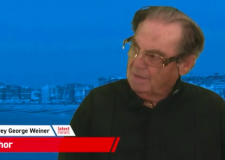Barbara Hulanicki, a Cinderella story
With its cutting edge fashion, Barbara Hulanicki’s iconic Biba label transformed the High Street shopping experience in the 1960s. Here the designer talks to Jeff Hemmings about her Brighton beginnings & being mistaken for Bono’s mother
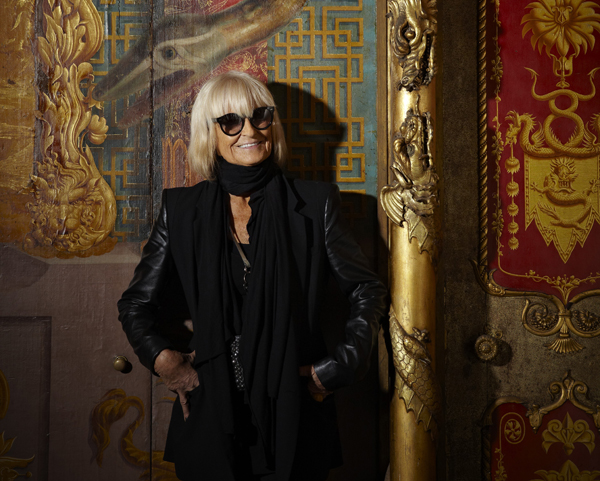
Barbara Hulanicki was born in Warsaw and, as a young girl, enjoyed the privileged life of a diplomat’s daughter in Palestine, where her father worked as a mediator between the Arabs and Jews. After the assassination of her father by the Stern Gang in 1948 her family fled to England and settled in Brighton. Here, Barbara attended Brighton Art School (which has subsequently become part of Brighton University, from whom she has an Honorary Doctorate) where she studied Fashion Illustration.
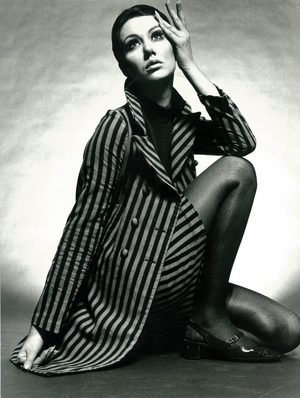
“Joanne Brogdan was an inspiring tutor; terrifying, but she was amazing,” Barbara says.
“She never said anything good about your work, you could never impress her. I remember an exam I did and she said, ‘they didn’t pass you, did they?!’”
After graduating she worked as an illustrator for the likes of The Times and Vogue magazine. “There was very little photography in those days, so the drawing part was very important. You had to remember what you had seen. There was an embargo of 30 days before you could release any pictures. I was often asked to do illegal drawings [released before the 30 day embargo was up]; I had to have an incredible visual memory.
“In those days I had no clothes to wear – not one thing that was respectable. I was there for hours on end [at fashion shows] with these terrifying journalists… It was like being Cinderella. I was young and they were old bats!”
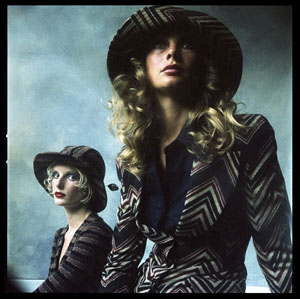
Meanwhile, Barbara continued to work in clothing workshops: “I knew I didn’t want to sit in a workshop picking up pins, because they wouldn’t let you do anything for years until they knew you could sew or pattern cut.” But with the encouragement of her husband, Fitz, Barbara created Biba’s Postal Boutique and early stores in London and Brighton, and eventually the six-storey Big Biba in the former Derry & Toms Art Deco department store in London.
“At the beginning we were making dresses, packing all night for mail order, just making a small number. I designed the garments and Fitz handled the business. They sold for 25 shillings and we made a ha’penny for each dress.”
In 1964 they were invited to produce a design for a feature by the Daily Mirror’s fashion editor Felicity Green. “I said to Felicity, ‘What about gingham? Brigitte Bardot is wearing gingham…” In the end Barbara produced a Brigitte Bardot-inspired pink gingham dress with a keyhole back and matching kerchief, eventually selling 17,000 of these dresses.
The first Biba boutique opened in 1964; Hulanicki laid a black and white tiled floor, painted the walls navy and reused the shop’s original fittings. Bentwood hat stands were used to display the clothes, the lighting was subdued and the music was loud.
“There were no boutique shops before mine, although there was a Mary Quant shop in Knightsbridge, but she did very expensive stuff for Sloane Rangers… There was just ‘Madam’ shops – ‘can I hep you Madam’ – the dragons! Carnaby Street came much later, although there were shops for men then. The men were tiny little things then. Little!”
Cathy McGowan was an early fan of Biba’s designs. “She was amazing, immaculate. We used to make her things for her TV shows [including the legendary Ready, Steady, Go]. I thought, ‘This girl really knows about clothes’.” Young girls would see McGowan wearing Biba on TV and rush to Hulanicki’s shop.
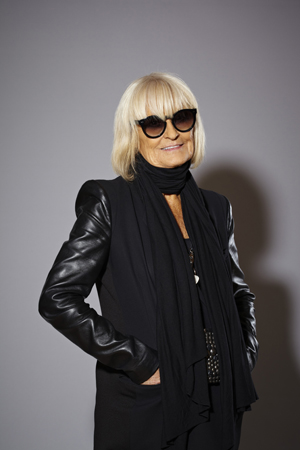
Only very short runs were produced with new stock arriving almost daily. “It was a specific decision to keep prices low,” Barbara continues. “And celebrities weren’t celebrities then; some of them were just pests! I remember Sonny and Cher came in and we started saying, ‘Oh, the Americans are coming now.’”
Biba opened a branch in Brighton in 1965, at 21 Queen’s Road. “We employed a manageress who lived above the shop, but we hadn’t realised that she was a mobsters’ moll who entertained half the Brighton underworld! I remember somebody ringing and saying: ‘Carol the Arrow is in the shop’ – she used to come in every day – ‘and Phil the Pill, and Carol the Arrow has got an empty pram and is going to fill it with merchandise’. She was a gangster’s moll, a Graham Greene character! Stock was disappearing by the armful, and when a very famous ex-boxer came to see the ‘governor’ [Fitz] in London to demand protection money, we felt we should call it a day.”
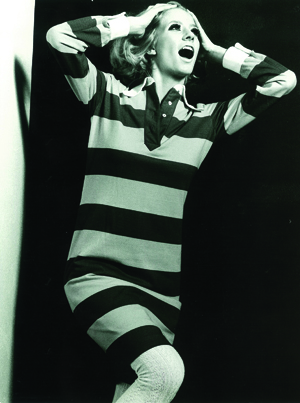
Over the years Biba moved to bigger premises on a number of occasions, increasing its turnover dramatically in the process and, by 1970, with Dorothy Perkins as a partner, Biba could also be found in Dorothy Perkins stores. Soon after, the Biba brand went overseas, in such iconic stores as Fiorucci in Milan and Bloomingdales in New York.
In 1973, Big Biba opened at the Derry & Toms Building, 99-117 Kensington High Street, the six-storey department store becoming an extraordinary lifestyle shopping experience. Although popular with famous customers, the store was never the exclusive preserve of the rich and famous. Prices were kept deliberately low. But the working relationship between British Land (owners of Dorothy Perkins at the time) and Barbara and Fitz deteriorated badly, and in October 1974 Barbara and Fitz walked away from Biba.
But Barbara never stood still: In 1980 she opened a series of clothing boutiques and launched a make-up line, all under her own name. She also briefly returned to fashion illustration to draw Sarah Ferguson’s wedding dress for the London newspapers
Hulanicki arrived in Miami Beach in 1987 where she reinvented herself as a designer of interiors
and exteriors, single-handedly re-conceiving Miami Beach’s then re-emerging Art Deco District.
From 1990 to 2006, Hulanicki has twice re-conceived major buildings in Miami, all for Chris Blackwell, owner of Island Records, and his Island Outpost Group. “It was fun,” Barbara recalls. “That whole district had my stamp on it. With Blackwells it was fantastic; all the rock stars would come! I was once in the lobby and Bono was there hanging out, and somebody came up to interview me, and then suddenly I realised he thought I was Bono’s mother because we wore the same sort of glasses!”
More recently, Barbara has gone back to her roots, designing for Topshop and George at Asda. “I’m still working with George, every six weeks a new line – they are very faithful and nice people.”
In the New Year’s Honours’ list 2012 Barbara Hulanicki was awarded an OBE for her contribution to British fashion. “When I went to get it, it was wonderful; Prince Charles knew all about Biba. I remember we had Princess Anne come in the shop once, in London. At the time we thought our reputation would be ruined!

“I find it frightening and depressing looking back,” Barbara says about the Beyond Biba exhibition opening at Brighton Museum this month. Around 200 exhibits will be displayed, including many famous Biba outfits created over the course of her long career, and her illustrations. “Putting this together has been a very interesting surprise. I think it’s a very English, rags-to-riches thing.”
Biba & Beyond: Barbara Hulanicki, Brighton Museum & Art Gallery, Royal Pavilion Gardens, 22 September 2012–14 April 2013.




















